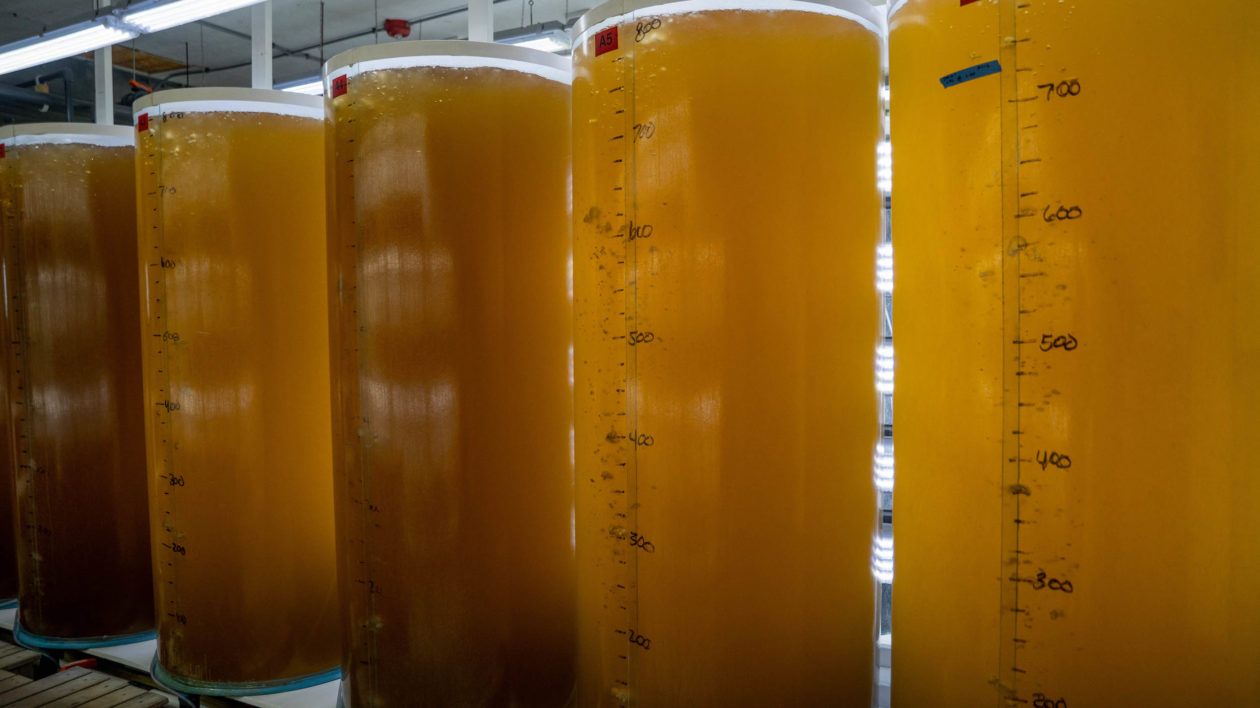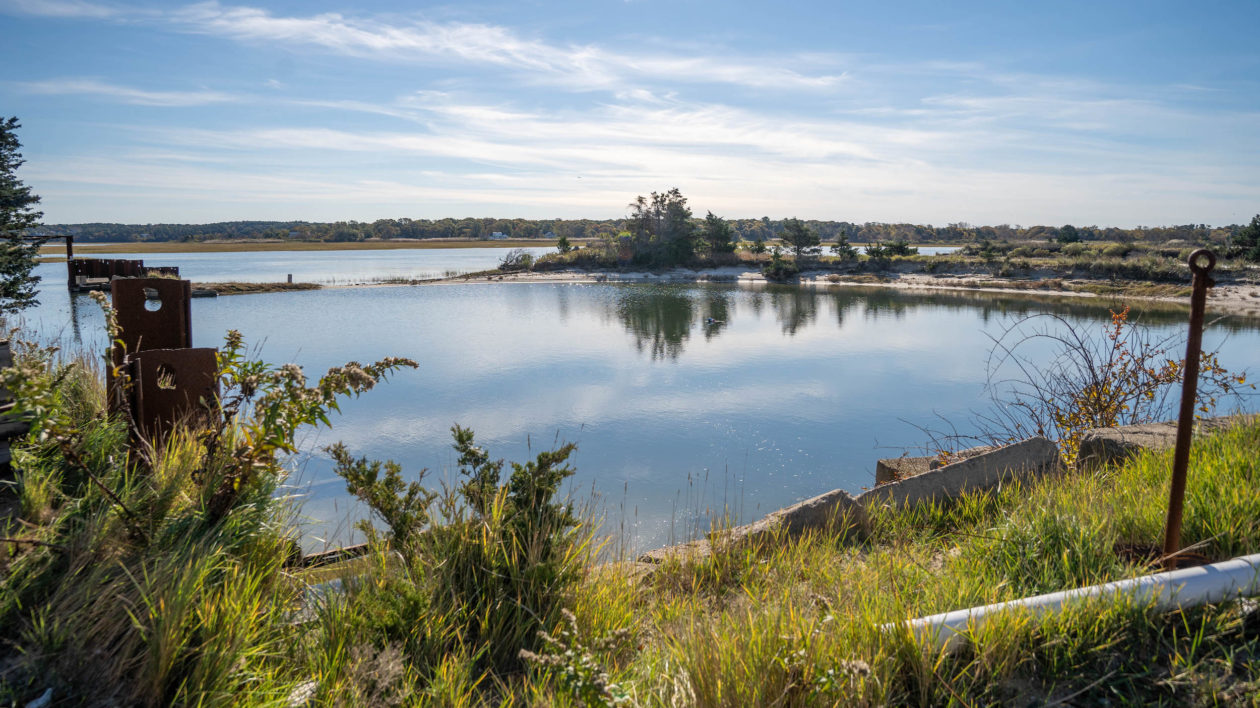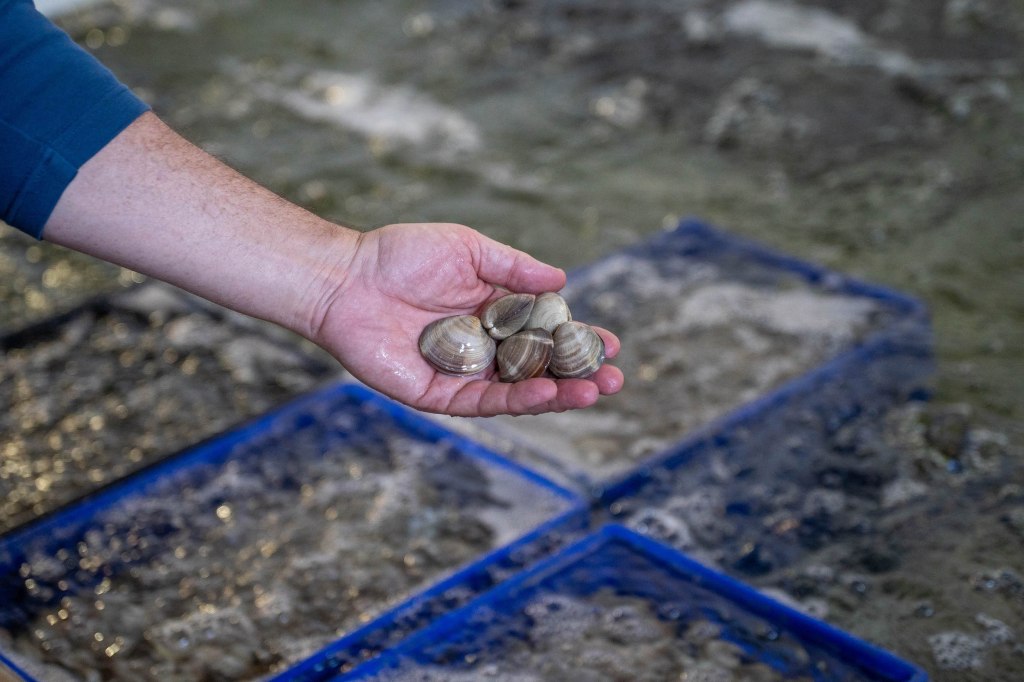If you’ve ever eaten an oyster, there’s a good chance it was grown by a farmer.
American waters used to teem with wild bivalves, but centuries overharvesting, pollution, and disease have nearly wiped them out; in some areas, wild oyster populations stand at about 1 percent of historical levels.
To continue to meet growing consumer demand despite dwindling wild harvests, bivalves are now predominantly spawned and grown on farms. Today, about 95 percent of oysters and mussels, 85 percent of clams, and 65 percent of scallops consumed worldwide are cultivated.
Seafood-loving consumers aren’t the only ones who have benefitted from the popularity of shellfish aquaculture; it’s also a boon to the environment. Not only do bivalves emit negligible greenhouse gasses, providing a low-carbon protein source, but they also foster biodiversity by filtering excess nutrients from our waterways and by creating habitat for other marine species.
Though farming has helped the shellfish industry cope with its historical challenges, an even more vexing problem has cropped up: climate change. Over the last several decades, a variety of climate-related pressures have complicated the bivalve growing process, threatening thousands of jobs and a vital food source.
In 2018, united by their concerns about the crisis, a group of seven shellfish growers founded the Shellfish Growers Climate Coalition (SGCC). In the subsequent four years, the organization has grown to more than 250 businesses across the shellfish supply chain, working together for immediate and meaningful climate policy.
Outside of their collective advocacy, coalition members are also mitigating and adapting to climate challenges within their own businesses – starting with the seed they grow. Some seed – juveniles ranging from around the size of a sesame seed to that of a quarter – is collected after bivalves spawn naturally.
However, as various environmental factors have rendered this method less reliable, a significant portion of seed is now grown in laboratories known as hatcheries.

Coddling Mollusks
This process starts with brood stock – adult oysters, mussels, clams, and scallops – that are selected based on specific genetic traits like disease resistance, growth time, taste, appearance, and even tolerance to certain environmental changes.
Those brood stock are then placed in water tanks that mimic the conditions under which bivalves spawn in the wild. Just a few dozen bivalves can produce millions of fertilized eggs, which quickly develop into swimming larvae. For the next few weeks, these tiny mollusks are coddled indoors, where they live in tanks of temperature-controlled seawater and are fed microalgae. This gives them the energy they need to grow their shells and metamorphosize into spat, small bivalves ready to take up life as bottom dwellers.
Once they’re easily visible to the naked eye, the juvenile shellfish can be transferred outside to a nursery. Here they are held in containers that protect them from predators and other risks, while allowing them to consume wild phytoplankton and algae as well as acclimate to seawater and weather fluctuations. From there, the seed is bagged and distributed to growers.

Even in the best conditions, spawning and growing oysters is a delicate science, subject to the whims of Mother Nature. But the business has become progressively more precarious with the addition of carbon pollution, higher temperatures, and greater weather extremes.
“The environment is a huge issue for all of us in the industry,” said Rick Sawyer, who serves as the president of the Aquacultural Research Corporation (ARC) Hatchery in Dennis, Massachusetts.
No region has been spared; hatcheries from the Pacific Northwest to New England have noticed changes – including Washington state’s Taylor Shellfish, the largest producer of farmed shellfish in the United States.
“It was about fourteen years ago when our hatchery started experiencing catastrophic losses in our oyster larvae production,” said Bill Dewey, the company’s director of public affairs.

Of Algae and Acidification
Water quality is among the biggest challenges. Rising sea levels, for example, are pushing more saltwater into brackish coastal estuaries, increasing their salinity. On the other hand, more frequent and intense rainfall can introduce too much freshwater, thus decreasing salinity. Either one is dangerous; if the salinity shifts too much in any direction, it can result in mass mortality events.
In addition to reducing salinity, storms can also foster the growth of toxic algal blooms. Heavy rainfall washes sewage and fertilized soil into the ocean, both of which contain nutrients like phosphorus and nitrogen.
Those nutrients feed harmful algae, which grow quickly and consume large amounts of oxygen, creating a “dead zone.” Without adequate oxygen supplies, other species, especially immobile animals like bivalves, suffocate to death.

If that weren’t enough, some algae is also toxic, sickening nearby species and the people who consume them. These catastrophic events, known as red tides, can shut down shellfish beds for months at a time and seriously disrupt coastal economies and food security.
When it comes to the chemical makeup of seawater, too little oxygen isn’t the only issue; too much carbon dioxide is just as troublesome. About a third of carbon dioxide is absorbed by our oceans, making it the largest carbon sink.
The higher concentration has made ocean waters about 30 percent more acidic than they used to be, which, among other consequences, is making it harder for bivalves to grow shells.
According to Dewey, this acidification has been the primary source of Taylor Shellfish’s headaches. “Through an outstanding collaboration with NOAA, university, and industry scientists, we came to understand it was changing ocean chemistry as a result of carbon dioxide pollution that was contributing to our losses.”
As the foundation of the shellfish industry, the stakes are high for hatcheries to build resilience to climate threats. “We’re supporting 1,300 jobs on Cape Cod and creating an important food source,” said Sawyer. “If ARC runs into issues, that’s not just going to affect us – that’s going to affect a lot of people.”

Building Resilience
One piece of the puzzle is water monitoring and filtration to ensure salinity, pH, and nutrient levels that are conducive to bivalve growth.
Water quality is important at every step of development, but it’s particularly crucial during the larval stage, Dewey indicated. “We have sophisticated monitoring equipment in the hatchery that tells us the carbonate chemistry real time and water treatment systems that adjust the chemistry to allow our larvae to successfully build their shells.”
In recent years, as storms and encroaching seas push contaminants into the bay, the problem has become increasingly difficult to deal with. “We’ve seen some significant water quality changes,” Sawyer said, “and filtering is getting expensive.”

Beyond prioritizing success in the initial stages of bivalve development, hatcheries also looking at the long-term resilience of their product. To provide their customers with hearty, dependable seeds, scientists are breeding lines of brood stock that can withstand climate-related risks.
That doesn’t just mean resistance to harsher environmental conditions, but diseases as well. As average ocean temperatures have increased, oyster farms all over the country have been hit with outbreaks of illnesses that thrive in warm waters, resulting in dead oysters and sick consumers. “We’re looking for brood stock that’s disease resistant, for oysters that have survived outbreaks. That’s going to help prevent more outbreaks down the line.”
To ensure the success of their adaptation endeavors, most hatcheries work closely with scientists. Virginia-based Oyster Seed Holdings (OSH), for instance, has coordinated with researchers from a number of institutions, including Virginia Sea Grant, Virginia Tech, the Virginia Institute of Marine Science, and the University of New Hampshire.
Mike Congrove, the facility’s owner and operator, said the partnerships have “have helped us better understand the changes to water quality we are seeing, how those changes are being driven by climate change, and what we can do to adapt to ensure the least impact on our hatchery production.” OSH plans to share their findings with growers in an “immersive hatchery tour experience” that will focus on the impacts of climate change.
Because climate change is such an immense and universal crisis, some hatcheries are also looking for opportunities to team up to find solutions. In a recent edition of the East Coast Shellfish Growers Association’s newsletter, Mook Sea Farm’s director of research and development Meredith White emphasized the need for collaboration.
“There are signs that hatchery production failures are increasingly due to environmental conditions beyond the control of individual hatcheries,” White wrote.
Mook Sea Farm’s owner and SGCC founding member Bill Mook echoed her concerns. “As climate change continues to challenge the shellfish we rear throughout their lifecycles, hatcheries can do a better job of meeting these challenges by collaborating to identify and solve problems.”




Join the Discussion
1 comment